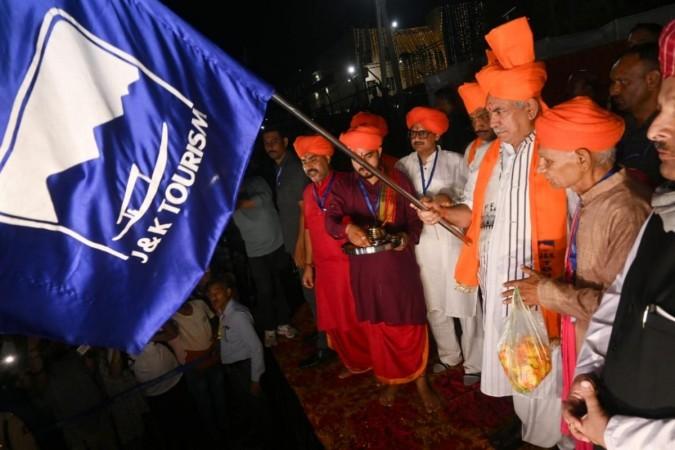The 62-day Amarnath Yatra commenced on Saturday with the first batch of pilgrims leaving for the cave shrine from the Baltal base camp in Kashmir's Ganderbal district.
Amid tight security arrangements, the pilgrims left the base camp early Saturday morning.
The 13 km-long trek from Baltal to the shrine passes through some of the most treacherous mountain terrain where local guides and ponies come handy for the pilgrims.

The locals immensely contribute to the successful completion of this Himalayan pilgrimage as their knowledge and experience of the mountainous terrain often saves lives and makes the journey comfortable.
Helicopter services are also available from Baltal to Panjtarni and back.
Pilgrims using the Baltal route take just a day to have 'Darshan' inside the cave shrine and return to the base camp.
The Himalayan cave shrine houses an ice stalagmite structure that symbolically mythical powers of Lord Shiva, according to the devotees. It is situated at an elevation of 3,888 metres above sea-level.

Meanwhile, those using the traditional south Kashmir Pahalgam route take 3 to 4 days to reach the shrine.
Historically, the 'Chhari Mubarak' (Lord Shiva's Mace) is carried from its seat at the Akhara Building temple in Srinagar to the cave shrine through the Pahalgam route.
The Yatra has two base camps at Baltal and Pahalgam and two transit camps at Haripora in Ganderbal and Mirbazar in Kulgam.
Meanwhile, the second batch of 4,416 yatris comprising 3,487 males, 616 females, 15 children, 271 sadhus and 27 sadhvis left the Bhagwati Nagar Yatri Niwas in Jammu in an escorted convoy of 89 heavy vehicles, 67 light motor vehicles and 32 medium vehicles for the valley also on Saturday morning.
(With inputs from IANS)














